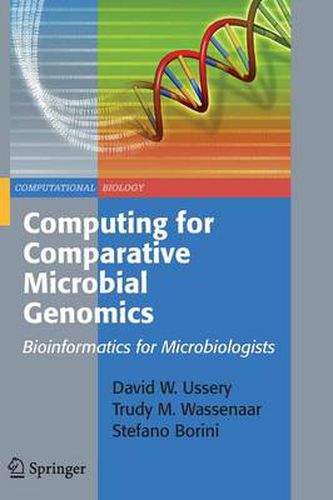Readings Newsletter
Become a Readings Member to make your shopping experience even easier.
Sign in or sign up for free!
You’re not far away from qualifying for FREE standard shipping within Australia
You’ve qualified for FREE standard shipping within Australia
The cart is loading…






This title is printed to order. This book may have been self-published. If so, we cannot guarantee the quality of the content. In the main most books will have gone through the editing process however some may not. We therefore suggest that you be aware of this before ordering this book. If in doubt check either the author or publisher’s details as we are unable to accept any returns unless they are faulty. Please contact us if you have any questions.
Overview and Goals This book describes how to visualize and compare bacterial genomes. Sequencing technologies are becoming so inexpensive that soon going for a cup of coffee will be more expensive than sequencing a bacterial genome. Thus, there is a very real and pressing need for high-throughput computational methods to compare hundreds and thousands of bacterial genomes. It is a long road from molecular biology to systems biology, and in a sense this text can be thought of as a path bridging these ? elds. The goal of this book is to p- vide a coherent set of tools and a methodological framework for starting with raw DNA sequences and producing fully annotated genome sequences, and then using these to build up and test models about groups of interacting organisms within an environment or ecological niche. Organization and Features The text is divided into four main parts: Introduction, Comparative Genomics, Transcriptomics and Proteomics, and ? nally Microbial Communities. The ? rst ? ve chapters are introductions of various sorts. Each of these chapters represents an introduction to a speci? c scienti? c ? eld, to bring all readers up to the same basic level before proceeding on to the methods of comparing genomes. First, a brief overview of molecular biology and of the concept of sequences as biological inf- mation are given.
$9.00 standard shipping within Australia
FREE standard shipping within Australia for orders over $100.00
Express & International shipping calculated at checkout
This title is printed to order. This book may have been self-published. If so, we cannot guarantee the quality of the content. In the main most books will have gone through the editing process however some may not. We therefore suggest that you be aware of this before ordering this book. If in doubt check either the author or publisher’s details as we are unable to accept any returns unless they are faulty. Please contact us if you have any questions.
Overview and Goals This book describes how to visualize and compare bacterial genomes. Sequencing technologies are becoming so inexpensive that soon going for a cup of coffee will be more expensive than sequencing a bacterial genome. Thus, there is a very real and pressing need for high-throughput computational methods to compare hundreds and thousands of bacterial genomes. It is a long road from molecular biology to systems biology, and in a sense this text can be thought of as a path bridging these ? elds. The goal of this book is to p- vide a coherent set of tools and a methodological framework for starting with raw DNA sequences and producing fully annotated genome sequences, and then using these to build up and test models about groups of interacting organisms within an environment or ecological niche. Organization and Features The text is divided into four main parts: Introduction, Comparative Genomics, Transcriptomics and Proteomics, and ? nally Microbial Communities. The ? rst ? ve chapters are introductions of various sorts. Each of these chapters represents an introduction to a speci? c scienti? c ? eld, to bring all readers up to the same basic level before proceeding on to the methods of comparing genomes. First, a brief overview of molecular biology and of the concept of sequences as biological inf- mation are given.